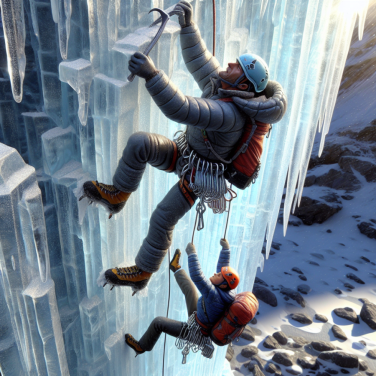The Adrenaline Rush: Embracing the Exhilaration of Skydiving
Skydiving, a sport that overwhelms you with overpowering emotions and sensations like no other, gives you an adrenaline pump unlike anything else. It offers you the chance not just to soar in the sky, but to gazette a new threshold of exhilaration and thrill.
When skydiving, the adrenaline rush commences even before you leap off the plane. As you reach for the door, with every cell in your body screaming against this perceived danger, you're hit with a rush of fear and excitement. Then, you finally jump. And for a few seconds, you are in complete freefall, plummeting towards Earth at speeds reaching 120 mph or even more. Remember, fear is not necessarily a bad thing. It is your body's way of acknowledging risk and preparing you to handle it.
Embracing and savoring every sensation of this rush, especially the feeling of freefall, is what makes skydivers pursue this extreme sport time and again. The first few seconds of freefall can be overwhelming as you adjust to the feeling of zero gravity, but the body quickly adapts. Once you reach terminal velocity, the feeling shifts more to that of floating or flying, providing an extraordinary sense of peace and exhilaration at the same time.
Making peace with the fear is a significant factor in enjoying the skydiving experience. It's vital, as a skydiver, you don't just battle your fear and feelings of anxiety, but you understand, accept, and manage them. This self-awareness is one of the key reasons skydiving can be such a life-changing experience.
Embracing the sensation of falling, allows you to immerse yourself fully into the thrill of the jump. The raw power of the wind, the breathtaking scenic view, the ever-increasing pull of gravity; each aspect of the dive contributes to a unique cocktail of emotions that skydiving addicts chase after.
During a skydiving freefall, all your senses are heightened. You observe the world from an entirely different perspective, all while your body is flooded with adrenaline and endorphins. This is also an essential part of why so many people find the experience addictive. The unique feeling of serenity and thrill pushing your mind and body to their natural limits can lead to a fantastic sense of accomplishment on landing.
Expressing and sharing the emotions evoked through skydiving can also be an excellent way for individuals to understand their experiences better.
Read also:
Reinvigorate Your Life: A Comprehensive Guide to Fitness Classes
Understanding the Basics: Skydiving Safety Measures and Techniques
Skydiving, as exhilarating as it is, entails unique safety measures and techniques to ensure a thrilling but safe flight experience. Before delving into the captivating world of freefalling, it's crucial to understand the safety measures and various techniques that can take the adventure to greater heights.
Skydiving safety starts on the ground with the rigorous training of skydivers to ensure they are capable of handling the physical and mental demands of jumping out of a plane. This training includes thorough lessons on how to control the parachute, proper body position during freefall, and how to deal with potential emergencies. A professional tandem instructor accompanies rookies on their first experiences, providing reassurance and ensuring right execution of all techniques.
An integral part of skydiving safety is the use of appropriate equipment. The parachute system, the backbone of a skydiver’s gear, primarily consists of a main parachute, a reserve parachute, and an automatic activation device (AAD). The AAD is a unique piece that automatically deploys the reserve parachute when a skydiver reaches a certain altitude and speed without deploying their main parachute.
Next, the jumpsuit and helmet serve to protect the skydiver from the wind's harsh force during freefall and potential impacts during landing. Skydivers also need goggles to protect their eyes and a pair of skydiving-specific shoes to ensure they have control and stability during the landing.
The technique of exiting the aircraft plays a significant role in ensuring a successful jump. Skydivers need to position themselves on the edge of the door and lean forward with their head held high before jumping. A correct exit involves a perfectly timed leap paired with a stable body position to avoid uncontrollable spins or flips.
Once in freefall, maintaining a stable body position is critical. Skydivers usually assume a "belly-to-earth" orientation where they spread out their arms and legs and arch their back. This position allows for maximum surface area exposure to the wind, creating stability.
Managing the parachute's descent is another vital technique. It involves controlling the rate of descent and direction by pulling down on the parachute cables known as the risers. Understanding the control mechanisms of the parachute allows skydivers to navigate their way to the landing area, evade obstacles, and make precise landings.
Lastly, landing safely is the culmination of a successful skydive.




